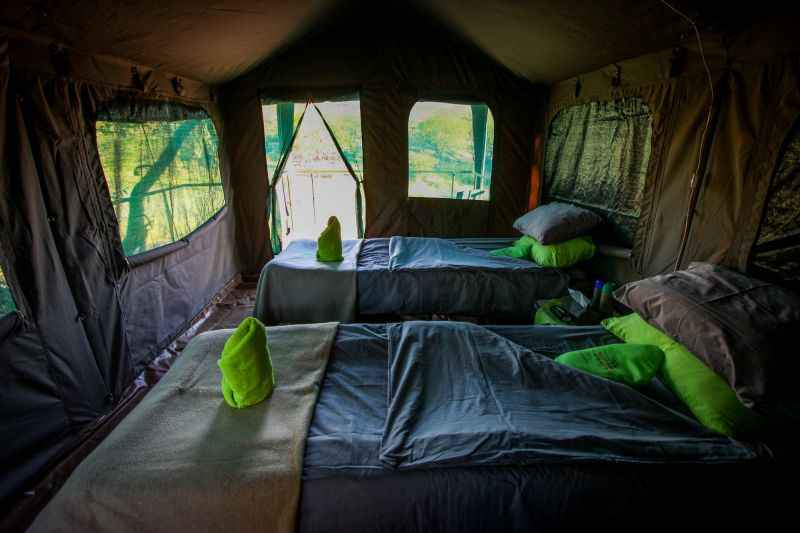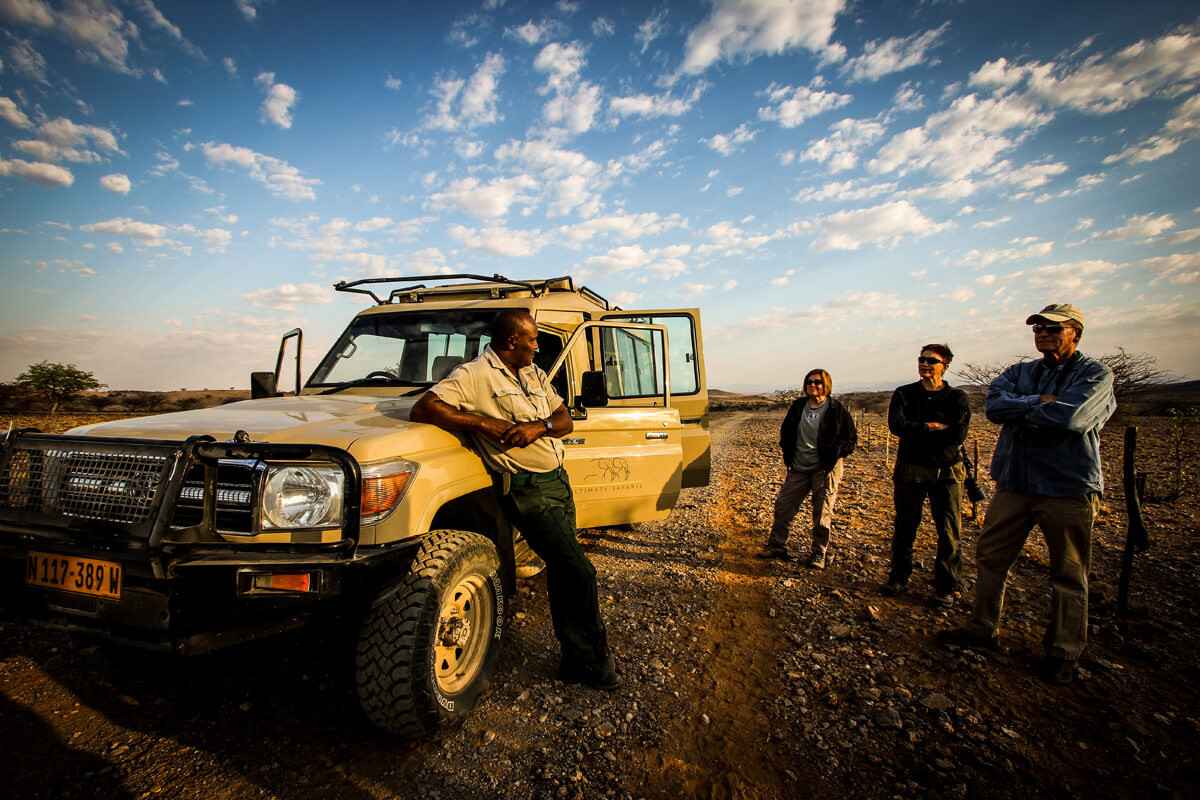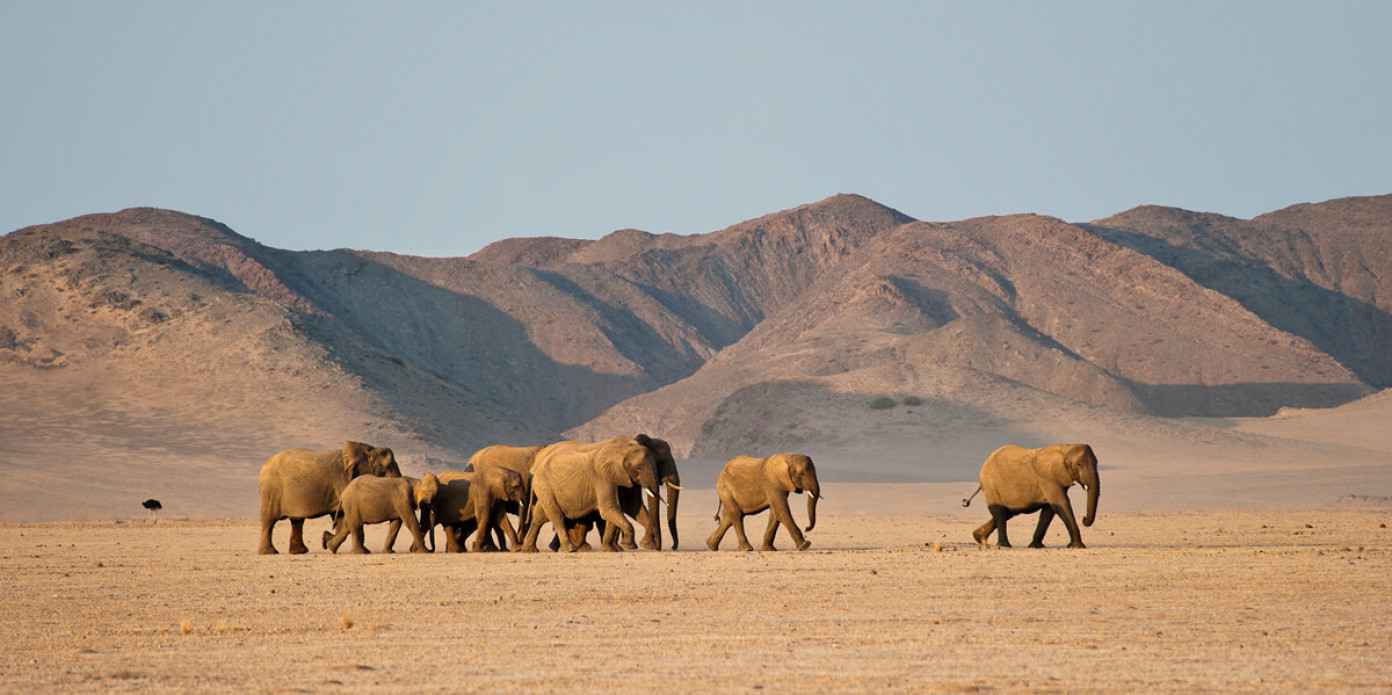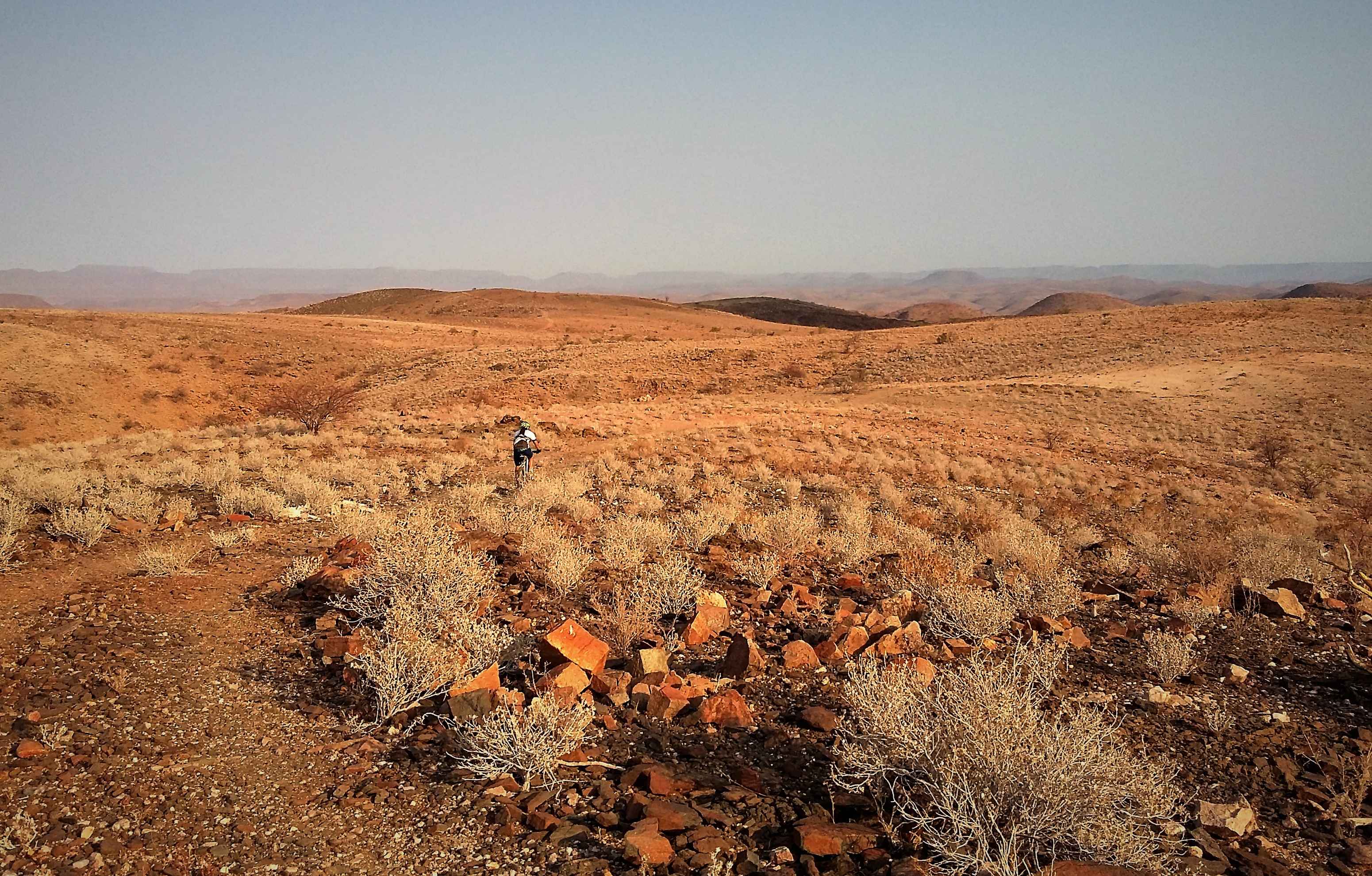Le Sauvage Private Island
Huab Under Canvas is nestled in a grove of Mopane trees on the banks of a tributary of the Huab River in the heart of Damaraland. Protected from all the prevailing winds and sun, the camp is virtually invisible from anywhere around and it carries arguably the lowest environmental footprint of any camp in Namibia. Since this camp is semi-permanent and seasonal, there is a degree of compromise required concerning the frills and other ‘add-ons’ that you might expect in a permanent tented camp or lodge. However, there is still a strong focus on ensuring complete comfort. Those prepared to forego some conventional ‘necessities’, so that they are unencumbered by buildings and all the paraphernalia that goes with them, will be able to go to sleep hearing only the noisy silence of the desert and to wake up to a chorus that announces the start of a new day. It is the kind of intimacy that can only be achieved by taking guests to the most wild, remote and private places, and keeping them well away from the beaten path.
8 Tents are raised on mobile platforms and have basic infrastructure such as single beds, cupboards, solar power and some important comforts such as en suite flush toilets and bucket showers. However, the essence of the camp remains under canvas, mobile and experiential.
AT A GLANCE
Only exclusive use
Best sold for groups of 4 guests or more
8 en-suite Meru tents
Family tents with attached kiddies tents as required
Open-air bathroom with flush toilet & hot water bucket shower
Stellar escapes
Day bed on deck
Plunge pool
Fully inclusive of all meals, local drinks and activities
Spacious communal lounge, dining room, campfire circle and deck
Communal electrical charging facilities
Open April to November
Minimum 2 night stays (3 nights recommended)
Children very welcome
100% solar powered
NO WIFI
The camp offers:
Game Drives
Nature Walks
Biking
Rock Art
Stargazing
Sleep-outs
Rhino Tracking
Spend an exciting and memorable morning out rhino tracking with the assistance of local trackers. It is worth noting that these black rhino form part of one of the only free-roaming black rhino populations in Africa and tracking animals in an unfenced and uninhibited environment is an absolute privilege. You will return to camp for a freshly prepared lunch and with time to relax at camp during the heat of the day. Later in the afternoon you head out again for a scenic nature drive or walk to explore this vast and astounding ecosystem. //Huab Under Canvas works together with the Save the Rhino Trust (SRT) - an NGO that has been has been instrumental in the preservation of the rare, endangered, desert adapted black rhino. Having barely survived the slaughter in many parts of Africa during the '80s and '90s, the black rhino population of Namibia increased substantially since the formation of SRT.
Desert Black Rhinoceros: Namibia is home to the larger of two subspecies of the black rhinoceros found in southern Africa. The only population that remains in the wild, unfenced and outside reserves occupies an arid range in the western Kaokoveld. Their preferred habitat is the mountainous escarpment, but they follow ephemeral rivers into the northern Namib as well, especially when conditions are favorable after rains. They are the only black rhinoceros in Africa that are internationally recognized as a “desert group”. Like desert-adapted elephant, they cover great distances. They walk and feed at night and rest during the day. To meet their nutritional and bulk requirements they browse on no fewer than 74 of the 103 plant species that grow in their range. One of the few animals to eat fibrous Welwitschia leaves; they even feed heavily on the milkbush (Euphorbia virosa) with its sharp spines and toxic latex, presumably because of the high water and fat content. They are physical defenses of dryland plants without apparent harm. Once widespread in the subcontinent, black rhinoceros are an endangered species. The smaller subspecies, Diceros bicornis minor, does not range into Namibia.
Elephant Tracking
Enjoy the freedom to discover the fascinating landscapes with your private naturalist guide both by vehicle and on foot. Damaraland is a surprising refuge for desert adapted wildlife that may include elephant, giraffe, oryx, springbok and even some predators such as lion. However, as with any wildlife sightings in Namibia, this depends on many factors including seasonality so specific sightings are never guaranteed. The wildlife roams large tracks of unfenced desert landscapes and finding game can be challenging, but this is all part of the adventure of exploring this wild untouched gem of Namibia. Today’s focus will be largely on tracking the elusive desert adapted elephants in the ephemeral river systems, an activity which will mean spending most of the day out. Your guide will take along a delicious picnic lunch and you will return to camp in the late afternoon.
Desert Adapted Elephant: In habitats with sufficient vegetation and water an adult elephant consumes as much as 300 kg of roughage and 230 liters of water every day of its life. Consider what a herd of them would eat and drink in a week or a month or a year. African elephant in a desert? Well, yes! Not only elephant, but other large mammals like black rhinoceros and giraffe as well. Their ranges extend from river catchments in northern Kaokoveld as far south as the northern Namib. Apart from the Kunene River, seven river courses northwards from the Ugab provide them with possible routes across the desert, right to the Skeleton Coast. The biggest are the Hoarusib, the Hoanib, the Huab and the Ugab Rivers. Desert adapted elephant in Kaokoland and the Namib walk further for water and fodder than any other elephant in Africa. The distances between waterholes and feeding grounds can be as great as 68 km. The typical home range of a family herd is larger than 2,000 km², or eight times as big as ranges in central Africa where rainfall is much higher. They walk and feed at night and rest during the day. To meet their nutritional and bulk requirements they browse on no fewer than 74 of the 103 plant species that grow in their range. Not a separate species or even a subspecies, they are an ecotype unique to Namibia in Africa south of the equator, behaviorally adapted to hyper-arid conditions. Elephant in Mali on the southwestern fringe of the Sahara Desert are the only others known to survive in similar conditions.
